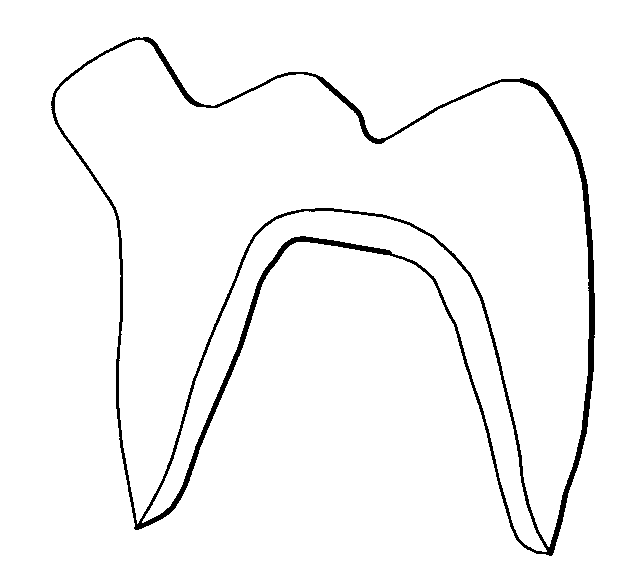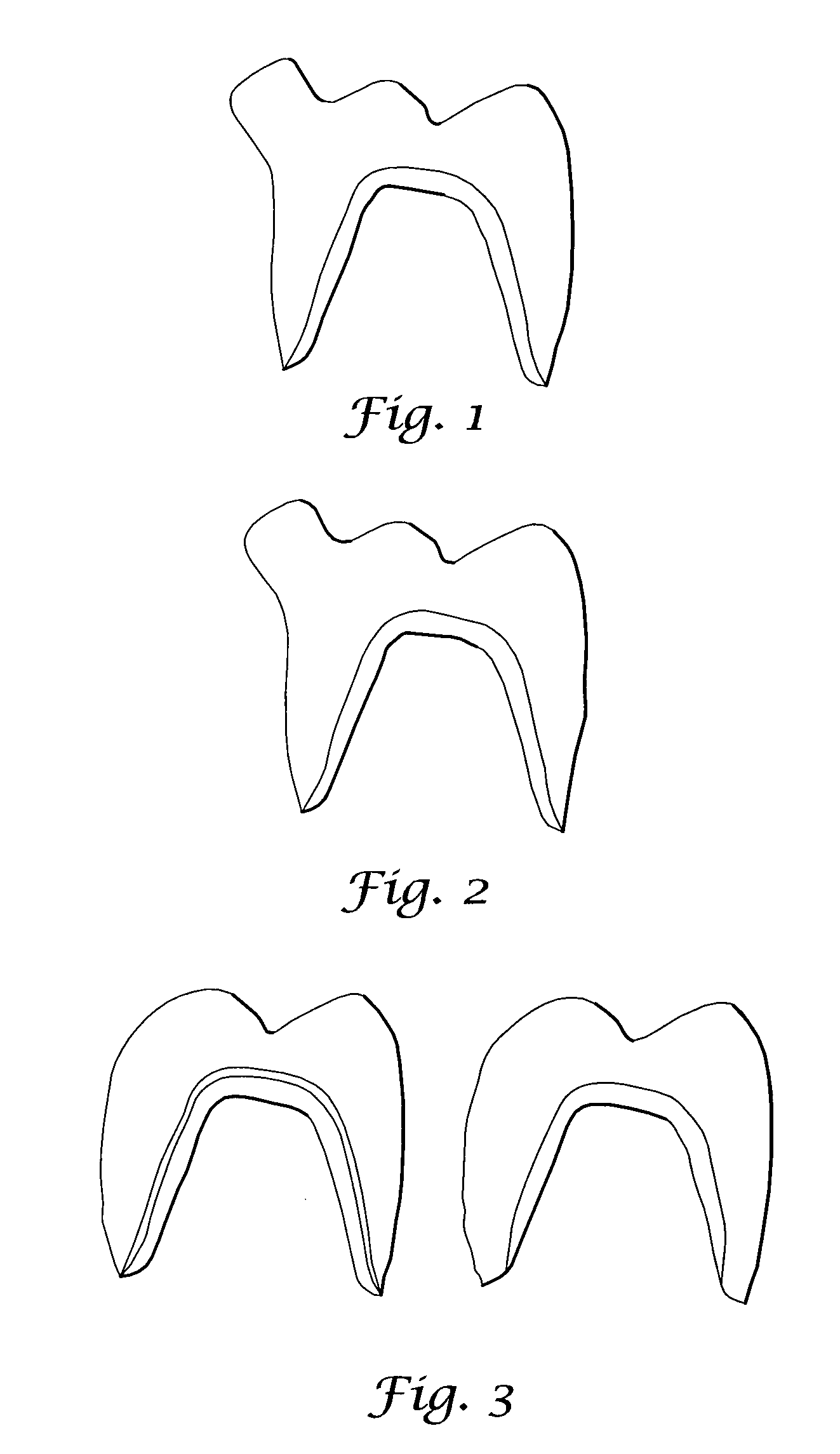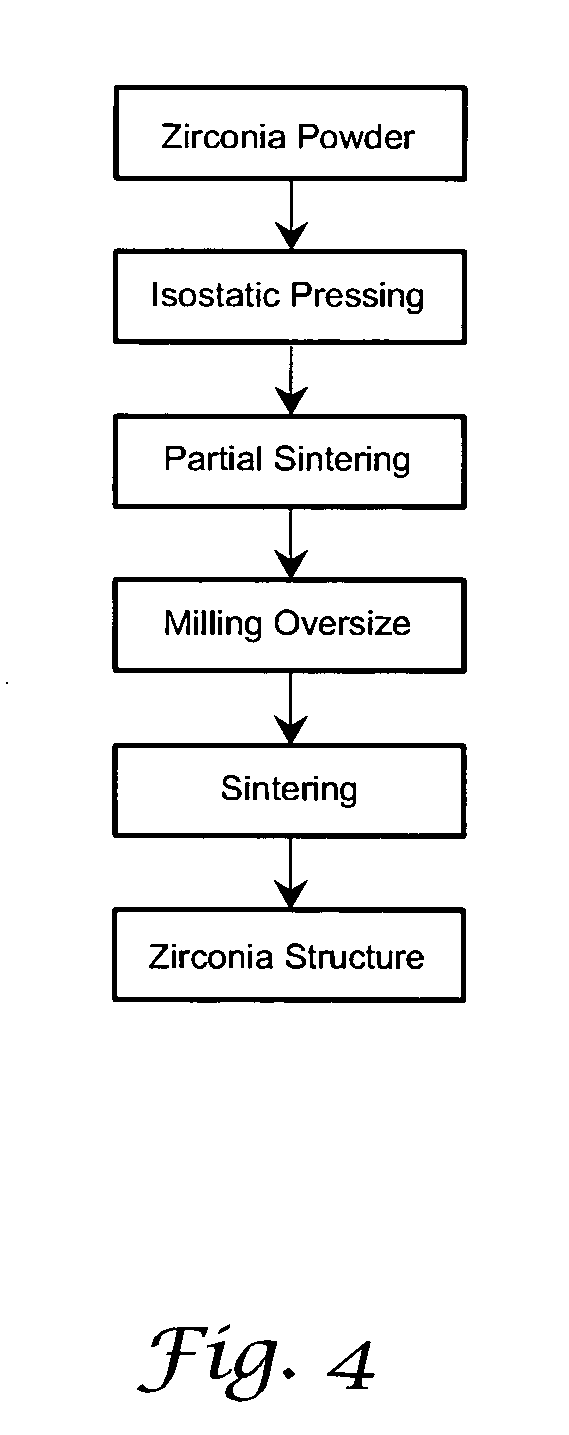Strengthened ceramic restoration
a ceramic restoration and strengthening technology, applied in the field of aesthetic ceramic dental restorations, can solve the problems of difficult to obtain proper occlusal contact with the antagonist teeth, cost and time saving in comparison to the traditional porcelain layering process, and achieve the effects of accelerating the spread of ltd, preventing or preventing, and reducing the strength of the ytzp-dental glass bonding
- Summary
- Abstract
- Description
- Claims
- Application Information
AI Technical Summary
Benefits of technology
Problems solved by technology
Method used
Image
Examples
examples 1-4
[0069]Low expansion glasses or glass-ceramic materials suitable for over-pressing a zirconia suprastructure such as a crown, part-crown or bridge were prepared. Thereto, four mixtures were produced by blending powdered metal oxides or carbonates or nitrates in the appropriate proportions. The blended powders were fused to form a glass melt followed by quenching, drying, ballmilling and seeving by means known in the art (see Table 1 for the final compositions).
[0070]The powder formed from either one of the four undermentioned glasses having a particle size of less than 106 μm are pigmented to obtain a toothlike appearance. Then the powder was granulated with a binder and uniaxially dry-pressed at 900° C. for 20 minutes.
[0071]A partially stabilized zirconia with a density of 99.8% of theoretical density with an open porosity of less than 0.2% was obtained by following the method depicted in FIG. 4. The elasticity modulus was about 200 Gpa and the fracture toughness was about 5 MPa.m. ...
PUM
| Property | Measurement | Unit |
|---|---|---|
| Temperature | aaaaa | aaaaa |
| Temperature | aaaaa | aaaaa |
| Temperature | aaaaa | aaaaa |
Abstract
Description
Claims
Application Information
 Login to View More
Login to View More - R&D
- Intellectual Property
- Life Sciences
- Materials
- Tech Scout
- Unparalleled Data Quality
- Higher Quality Content
- 60% Fewer Hallucinations
Browse by: Latest US Patents, China's latest patents, Technical Efficacy Thesaurus, Application Domain, Technology Topic, Popular Technical Reports.
© 2025 PatSnap. All rights reserved.Legal|Privacy policy|Modern Slavery Act Transparency Statement|Sitemap|About US| Contact US: help@patsnap.com



